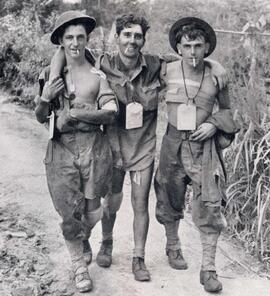The US Nuclear History: Nuclear Arms and Politics in the Missile Age, 1955-1968 microfilm collection presents an integrated record of US decision making relating to the development, production, and deployment of nuclear weapons, 1955-1968. Documents are generated from a number of sources including the US Department of State, US Department of Defense, US Air Force, US Joint Chiefs of Staff, US Strategic Air Command, the Executive Office of the President, US National Security Council, and Office of the Chief of Naval Operations. Material relating to early US policy planning and decisions on thermonuclear weapons includes relevance studies by the RAND Corporation, a US non-partisan government policy guidance institution, 1952; memoranda from the Office of the White House relating to nuclear weapons stockpiles and projections, 1959; and, memoranda from the US Department of State and the Atomic Energy Commission relating to underground and atmospheric nuclear testing, 1959-62. Papers relating to nuclear weapons development, acquisition and testing include memoranda from Gen Curtis E LeMay, Commander-in-Chief, US Strategic Air Command, relating to increased budgetary needs for the proposed nuclear build-up, Jan 1956; memorandum from Gen Andrew Jackson Goodpaster, Defense Liaison Officer and Staff Secretary to the President, relating to the concept of 'massive retaliation' in the event of a Soviet first-strike, May 1956; memorandum from the US Joint Chiefs of Staff relating to emergency war plans, nuclear strategy, and preventive war, Sep 1956; memorandum from the Gen Lyman L Lemnitzer, Chairman Joint Chiefs of Staff, relating to US doctrine on thermonuclear attack, Apr 1961; memorandum from the US Department of Defense to President John Fitzgerald Kennedy relating to scenarios for US and Soviet first-strikes, Oct 1961; memorandum from Secretary of Defense Robert Strange McNamara to the Office of the Secretary, US Army, relating to nuclear damage limitation and 'assured destruction'. Papers relating to nuclear strategy and planning include memoranda concerning the applicability of Soviet cities as targets of US nuclear attack; the US Strategic Air Command Basic War Plan, [Feb 1960]; papers relating to target co-ordination and planning for a functional Single Integrated Operational Plan (SIOP), 1960-1961; papers on 'war-gaming', net evaluation exercises of US capabilites in the event of a general nuclear war with the Soviet Union, including memoranda from Robert R Bowie, Director of US State Department Policy Planning Staff, concerning Soviet capabilities to inflict direct damage on the US, 1953-1967. Material relating to air, land and sea nuclear delivery systems, missile deployments, alert programs, and defence appropriations include memoranda from Goodpaster concerning Eisenhower's endorsement plans for missile program acceleration and for upgrading US Strategic Air Command capabilities, 1957; memoranda from the President's Science Advisory Committee relating to the construction of civil defence structures and missile deployments, 1958; report from the US Department of Defense, Weapons Systems Evaluation Group, reviewing US weapons systems and directly-related functions which constitute the strategic offensive posture of the US 1964-1967; press statements and memoranda from US Secretary of Defence McNamara relating to the doctine of 'assured destruction', defence appropriations, and weapons development, 1961-66; US National Security Briefings on strategic intelligence, Soviet capabilities for strategic attack, anti-missile and air defence, and economic trends, 1963. Papers relating to nuclear strategy, planning, weapons and delivery systems in the European theatre include reports regarding the North Atlantic Treaty Organization's strategy for nuclear war, 1954-1969; the deployment of Chrysler 'Jupiter' PGM-19 IRBMs in Western Europe; the establishment of the Douglas 'Thor' PGM-17 IRBM program in Great Britain, 1956-1963; the escalation of US-Soviet hostilies in Berlin, 1961; reports concerning British co-operation with with US Strategic Air Command; speech by US Secretary of State McNamara, in Athens, Greece, relating to US assurances to its European allies in the event of a general war, 1962. Papers relating to nuclear warning and defence include reports from the US Department of State concerning the immediate construction of a Distant Early Warning (DEW) system in Canada and Alaska, 1952-1953; reports from the President's Science Advisory Committee, including studies of civil defence measures in the event of a nuclear attack, 1957-1958; reports from the US Department of State regarding the construction of the Ballistic Missile Early Warning System (BMEWS) in the United Kingdom, 1958; memoranda from the North American Aerospace Command (NORAD), relating to nuclear pre- emption and tactical warnings, 1958-1959; reports from the President's Science Advisory Committee's Anti-Intercontinental Ballistic Missile Panel, 1958-1959; papers from the President's Science Advisory Committee and the US Department of Defense relating to the construction and deployment of Bell Laboratory Nike-Zeus and Nike X Anti-Ballistic Missiles (ABMs) in the US, Canada, and Western Europe, 1959-1968.


